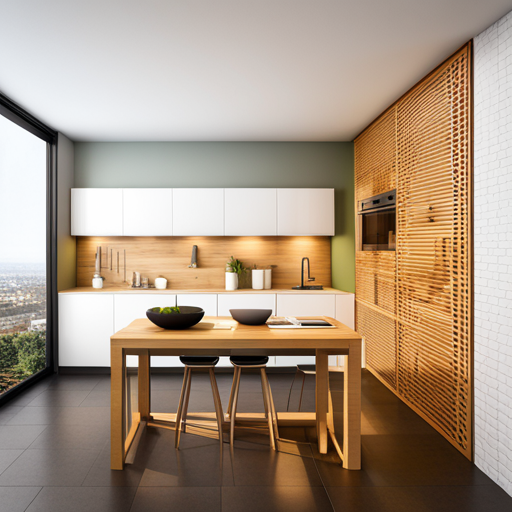Bamboo, a versatile plant widely used for various purposes, has gained attention as a sustainable firewood and charcoal alternative.
This article explores the question, ‘Can you burn bamboo?’ and provides insights into its safety, best uses, and considerations.
Burning bamboo offers a cost-effective and environmentally friendly alternative to conventional firewood, producing less smoke while providing efficient heating and cooking. However, it is crucial to ensure that the bamboo is grown without the use of chemicals to prevent any harmful emissions.
Proper preparation, including cutting, drying, and storage in a warm and dry place, is essential to prevent moisture absorption and mold growth. Moreover, certain types of bamboo are safe to burn, while others may be invasive or toxic to certain animals.
It is recommended to burn natural bamboo products like poles, furniture, flooring, and fencing, avoiding items mixed with chemicals like cutting boards or kitchen utensils.
Furthermore, bamboo can also be transformed into charcoal through specialized workshops.
Overall, burning bamboo can serve as a sustainable and readily available fuel source, especially when an abundant supply is present in the garden.
Contents
- 1 Our Highlighted Points
- 2 Is it Safe?
- 3 Best Uses
- 4 Types and Considerations
- 5 Is it Safe to Burn Bamboo?
- 6 Frequently Asked Questions
- 6.1 Can burning bamboo release harmful toxins or chemicals into the air?
- 6.2 Is it necessary to treat or prepare bamboo in any way before burning it?
- 6.3 Can burning bamboo be used as a method of bamboo pest control?
- 6.4 Can the ash produced from burning bamboo be used as a fertilizer?
- 6.5 Are there any specific precautions or safety measures to take when burning bamboo indoors?
Our Highlighted Points
- Bamboo can be burned for heating and cooking, making it a good bioenergy source.
- Burning bamboo is safe if it is grown without chemicals and can be a cost-effective and safe alternative to regular firewood.
- Bamboo burns quickly but produces less smoke than regular firewood, making it ideal kindling for starting a fire.
– Bamboo creates a lot of ash when burned, which can be used in the garden, and can be turned into charcoal through workshops.
Is it Safe?

The safety of burning bamboo for heating and cooking purposes is contingent upon the absence of chemicals in its growth, making it a cost-effective and viable alternative to traditional firewood. However, certain safety precautions should be taken into consideration.
It is important to ensure that the bamboo being burned has not been treated with any chemicals, as this can release harmful substances into the air when burned. Additionally, proper ventilation is necessary to prevent the buildup of smoke and carbon monoxide.
It is also important to store bamboo in a warm, dry place to prevent moisture absorption and the growth of mold, which can be harmful when burned. From an environmental standpoint, burning bamboo is considered a more sustainable option compared to regular firewood, as bamboo is a fast-growing and renewable resource.
Best Uses

One of the most versatile applications for bamboo is its use as a sustainable and eco-friendly material for various purposes. When it comes to burning bamboo, there are techniques that can be employed to ensure its efficient use as a fuel source.
Bamboo burns quickly and produces less smoke compared to regular firewood, making it an ideal kindling for starting a fire. However, it is important to consider the environmental impact of burning bamboo. While bamboo is a renewable resource, burning it releases carbon dioxide into the atmosphere. Therefore, it is crucial to use bamboo as a fuel source responsibly and in moderation.
Additionally, proper bamboo harvesting and storage techniques should be followed to prevent moisture absorption and mold growth. By employing these practices, burning bamboo can be a cost-effective and safe alternative to regular firewood.
Types and Considerations

Different types of bamboo and specific considerations should be taken into account when using bamboo as a fuel source.
When using bamboo for cooking, heating, and bioenergy, it is important to choose the right type of bamboo. Noninvasive bamboo types, such as Bambusa oldhamii and Bambusa ventricosa, are safe to burn and can be used effectively for these purposes. However, it is crucial to avoid burning invasive bamboo species like golden bamboo, as they can be toxic to certain animals.
Additionally, bamboo should be cut and dried before burning to ensure optimal burning efficiency. It is also recommended to store bamboo in a warm and dry place to prevent moisture absorption and mold growth.
By considering these factors, bamboo can be effectively utilized as a sustainable and eco-friendly fuel source for cooking, heating, and bioenergy purposes.
Is it Safe to Burn Bamboo?
Burning dishwashing bamboo can be hazardous. Although bamboo is a natural material, it can release harmful chemicals when burned. The smoke emitted may contain fine particles, carbon monoxide, and volatile organic compounds that can be harmful if inhaled. It is safer to dispose of dishwashing bamboo through composting or recycling methods.
Frequently Asked Questions
Can burning bamboo release harmful toxins or chemicals into the air?
Burning bamboo can release harmful toxins and chemicals into the air, posing risks to both indoor air quality and human health. These pollutants include carbon monoxide, volatile organic compounds (VOCs), and particulate matter, which can exacerbate respiratory conditions and contribute to air pollution.
Is it necessary to treat or prepare bamboo in any way before burning it?
Before burning bamboo, it is necessary to treat and prepare it. This includes cutting and drying the bamboo to reduce moisture content. Additionally, storing it in a warm, dry place prevents mold growth. The ash produced from burning bamboo can be used in gardens or for other alternative purposes. Bamboo burning techniques ensure efficient and safe combustion.
Can burning bamboo be used as a method of bamboo pest control?
Burning bamboo can be used as an eco-friendly method of bamboo pest control. By employing specific burning techniques, such as controlled burning and smoldering, pests can be eliminated while minimizing the environmental impact.
Can the ash produced from burning bamboo be used as a fertilizer?
The ash produced from burning bamboo can be used as a natural pesticide due to its high alkalinity. However, the impact of burning bamboo on soil fertility depends on factors such as the quantity and frequency of ash application.
Are there any specific precautions or safety measures to take when burning bamboo indoors?
When burning bamboo indoors, it is important to take certain precautions to ensure safety. These include proper ventilation, using a fireplace or stove designed for indoor use, and avoiding the burning of treated or painted bamboo products. Additionally, following general fire safety guidelines is crucial, especially if you’re dealing with fire-prone plants. The benefits of burning bamboo safely include its cost-effectiveness, efficient heating and cooking properties, and its potential as a renewable and eco-friendly fuel source.

